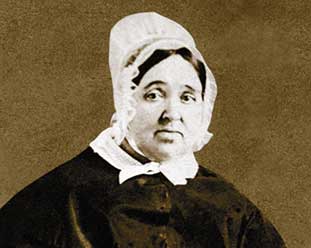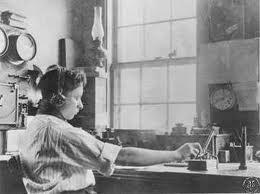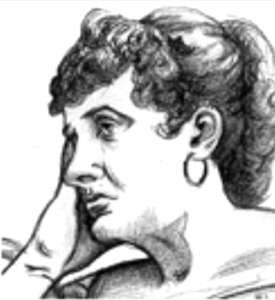Women throughout history have played a role in the freight shipping and railroad industry. Despite its reputation as a male-dominated industry, the railroad has been influenced by women since before they won the right to vote. In this first installment of our series celebrating the contributions of women in railroading, here are six ladies who made a difference.
Rebecca Lukens (1794–1854)

Rebecca Lukens is considered the first woman to lead an industrial company in the United States. Fortune Magazine recognized Lukens as “America’s first female CEO of an industrial company” in 1994.
Emma Hunter (1831–1904)
Emma Hunter was hired by the Atlantic & Ohio Telegraph Company in 1851. While she first officed out of her home and later out of her mother’s stationery store, she eventually moved to the Pennsylvania Railroad Company (PRR) depot. While it’s unclear who the first female telegrapher of her era was, Hunter was a highly skilled and valued employee of the Atlantic & Ohio Telegraph Company Her expertise was recognized by the company, which tripled her salary after her first year of employment (from $50 to $150 annually) in addition to a bonus of $150.
Though early telegraph lines often followed along railroad tracks in the railroad right of way, it wasn’t until 1851 that the railroad industry began using the telegraph to manage the movement of trains. As routing trains traveling from opposite directions on a single track was a continual challenge, errors in calculating train schedule timing often resulted in accidents and deaths. Superintendent of the Erie Railroad, Charles Minot, developed a process for telegraph operators at each station to manage train movements.
Elizabeth Cogley (1833-1922)
Another telegrapher, Elizabeth Cogley, also began her career for the Atlantic & Ohio Telegraph Company’s office in 1852. After learning Morse code and telegraph operation from Charles Spottswood, she took over as operator after his departure in 1855. When the Pennsylvania Railroad expanded to Lewistown in 1856, Atlantic & Ohio’s office was moved into the railroad depot so that the telegraph operator could handle train orders in addition to personal messages. Her skills as a telegrapher were recognized by PRR officials, and she was transferred to the company’s head office in Harrisburg, PA, in 1862. During the Civil War, Cogley communicated numerous important messages, including the first message from President Abraham Lincoln calling for 75,000 troops. Cogley eventually became a full-time railroad operator for the PRR and held this position for 45 years before retiring in 1900.
E.F. Sawyer

In 1872, E.F. Sawyer was hired by the Burlington Railroad in Montgomery, Illinois. Other historical records of Sawyer are few. Early telegraph systems used a telegraph or register that printed dots and dashes on a strip of paper to be deciphered later. This time-consuming, tedious process did not work well for train orders, as speed was paramount in order to avoid accidents on the rails. Railroad operators adapted by learning to listen to the clicks of the armature and decode the message as it was received. This method was called “receiving by sound.” In 1873, Union Pacific hired two more women to operate telegraphs in Kansas City. Sawyer and other telegraphers of this era played an important role in transmitting vital information in a timely manner, thereby helping to prevent train collisions.
Eliza Murfey
While historical records on Connecticut physician and inventor Eliza Murfey are incomplete, it is believed that Murfey filed approximately 30 patents for railroad packings from 1870 to 1873. Only 23 of these patents have been verified by historians. When her husband died in 1869, Murfey switched focus from medicine to mechanical engineering, though the reason behind this shift is unclear. She focused on inventions that improved the way bearings on the rail wheel attached to train cars responded to the axles. These devices, called “packings,” were designed to lubricate a train’s axles with oil, helping to reduce derailments caused by seized axles. Her designs, and the process she devised to improve the lubrication of railcar bearings, axles, and pistons, helped make railroad travel safer for all.
Mary Walton

Mary Walton was an American inventor who patented a sound-dampening system in 1881 to reduce the noise pollution caused by locomotives. The system utilized wood boxes lined with cotton and filled with sand and the rights to her invention was later acquired by the Metropolitan Railroad for $10,000. Other railway companies soon adopted the system, as well. Historical records relating to Walton’s life are limited, but her ability to notice and find solutions for problems secured her as a respected inventor and influence in railroad history.
